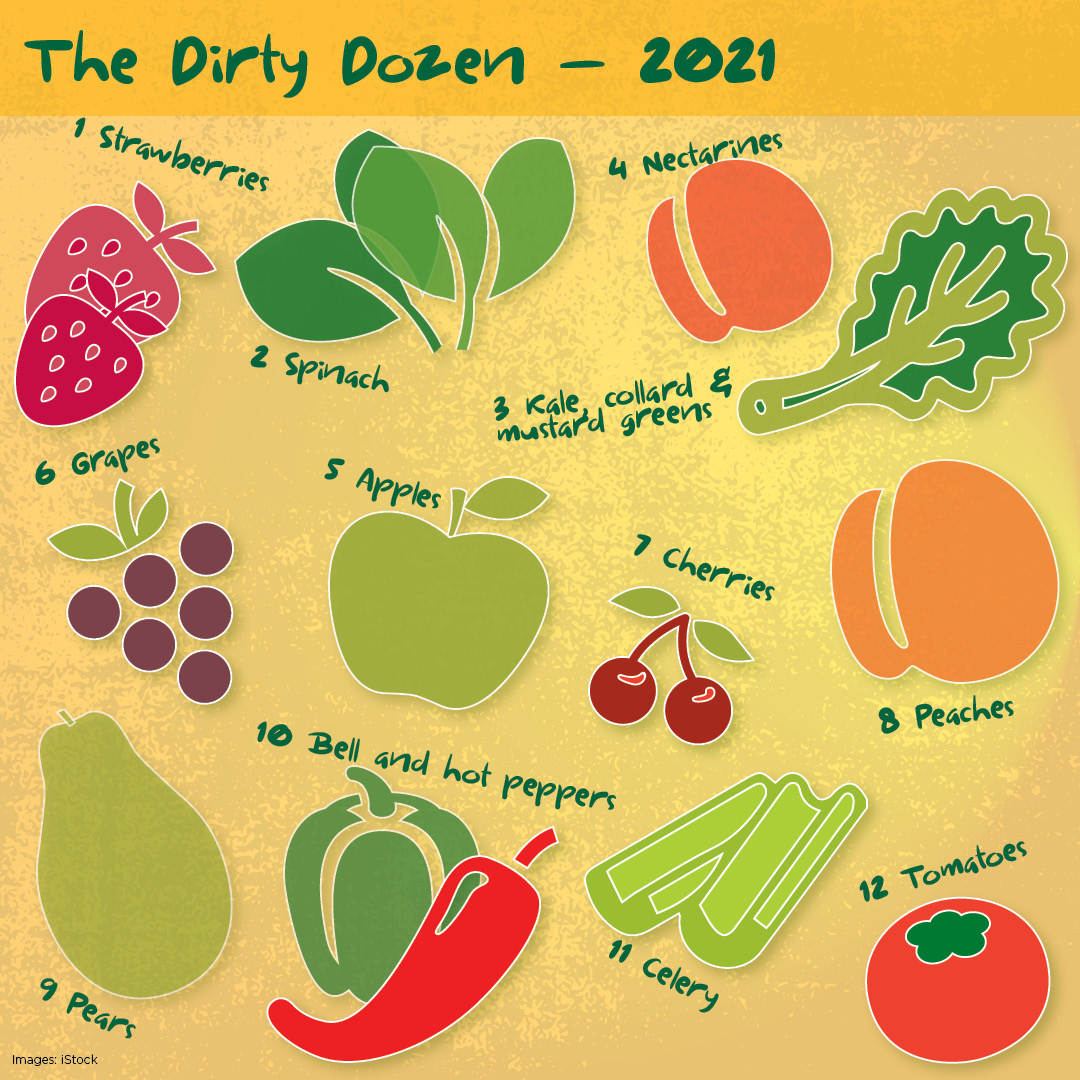The Environmental Working Group has released its 2021 Shopper's Guide to Pesticides in Produce, also known as the “Dirty Dozen” list.
The list is not peer-reviewed, and research that is peer-reviewed has showed that disparaging conventional produce results in the consumption of less produce overall, especially among lower-income shoppers, for whom organic produce may not be an accessible or affordable alternative.
EWG states that it bases its list on annual reports from the U.S. Department of Agriculture's Pesticide Data Program, but more than 99% of produce samples tested for those reports have residue levels that are compliant with Environmental Protection Agency standards. EWG finds the standards insufficient.
“The Shoppers Guide does not incorporate risk assessment into the calculations. All pesticides are weighted equally, and we do not factor in the levels deemed acceptable by the EPA,” EWG states in its methodology for creating the Dirty Dozen and Clean 15 lists.
The Alliance for Food and Farming, which represents the produce industry, has asked EWG repeatedly to stop publishing the list because of its negative effect on the perception of the healthiest items available on the market in a country facing a health crisis, with the obesity rate in the U.S. at 42.4%, according to the Centers for Disease Control and Prevention.
“To accurately assess consumer risks from pesticides, one needs to consider three major factors: 1. the amount of residue on the foods, 2. the amount of food consumed, and 3. the toxicity of the pesticides. The methodology used by EWG ignores all three,” Dr. Carl Winter, extension toxicologist emeritus with the University of California, Davis, said in a news release from the Alliance for Food and Farming.
In a news release announcing the 2021 Dirty Dozen list, EWG acknowledged the healthfulness of fresh fruits and vegetables but still recommended that consumers purchase organic.
“Whether organic or conventionally grown, fruits and vegetables are critical components of a healthy diet,” EWG toxicologist Thomas Galligan said in the release. “We urge consumers who are concerned about their pesticide intake to consider, when possible, purchasing organically grown versions of the foods on EWG's Dirty Dozen, or conventional produce from our Clean Fifteen.”
The same day the EWG published its updated lists for 2021, the Alliance for Food and Farming published its annual “A Dozen Reasons” list, highlighting the nutrient content and health benefits of the fruits and vegetables on the “Dirty Dozen” and encouraging consumers to “organic or conventional, just choose to eat more.”


This year EWG added collard and mustard greens to kale at No. 3 on its “Dirty Dozen” list. It flipped the rankings of cherries and peaches from the previous year to No. 7 and No. 8 this year. Bell and hot peppers were added at No. 10, “after being tested for the first time since 2012 and 2011, respectively,” EWG stated, pushing tomatoes to No. 12 and bumping potatoes off the list. The rest of the rankings remain unchanged from last year.
The top eight items on the “Clean 15” also remain unchanged. Broccoli moved up to No. 9 this year, cabbage moved up to No. 10, and kiwifruit moved up to No. 11. Cauliflower fell to No. 12, bumping mushrooms to No. 13. Honeydew melon remained unchanged at No. 14, and cantaloupe fell to No. 15.
Related articles
Listen to science and studies, not false claims and rhetoric — An analysis by toxicologists with the University of California Personal Chemical Exposure Program underscores the safety of fruits and vegetables.
How the produce industry can sap the influence of the Dirty Dozen — Until there is a comprehensive effort at education on the topic, the average consumer will continue to have no idea about the challenges of growing fruits and vegetables on a commercial scale.














